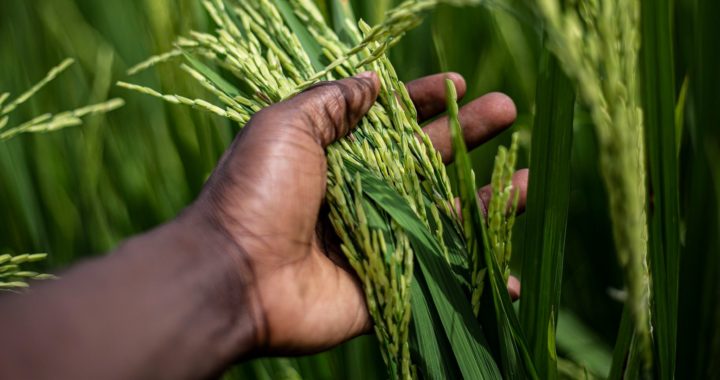The purpose of regenerative agriculture is to provide a system that eliminates or reduces the environmental impacts of industrial agriculture. It aims to promote sustainable food production and enhance food security or avoid food shortages through the conservation of the environment. However, despite its apparent advantages, the concept has several disadvantages centered on issues with implementations due to the presence of barriers.
A Look Into the Advantages and Disadvantages of Regenerative Agriculture: Understanding the Ups and Downs of Integrating Regeneration in Agricultural Systems
Pros of Regenerative Agriculture: Benefits and Applications
The principles of regenerative agriculture revolve around topsoil regeneration, water cycle improvement, increasing biodiversity, enhancing ecosystem services, biosequestration support, and climate change resilience. The concept mirrors the advantages of a circular economic model of production and regenerative design while also resolving the issues from the linear model of production and the specific intensive and large-scale agricultural practices. The following are the specific advantages of regenerative agriculture:
1. Enhances Food Security Through Sustainable Food Production
Conserving the immediate environment of an agricultural land is one of the main advantages of regenerative agriculture. This is important in promoting food security or lessening the instances of food insecurity and food shortage. The concept specifically approaches environmental conservation by creating harmony between food production systems and nature. It strives to make agricultural lands as self-sufficient as possible.
2. Increases the Climate Change Resilience of Food Production Systems
It is worth mentioning that the unpredictable weather patterns due to the ongoing climate emergency increase the risk of food shortages and food insecurity. Current food production systems are vulnerable to the impacts of extreme weather events like severe rainfall and floodings that destroy farmlands or megadroughts that increase water stress and water scarcity. Regenerative agriculture is also concerned with lessening the climate impact of agricultural activities and making agriculture systems resilient to climate change.
3. Guides Policymakers and Relevant Government Agencies
The United States, under the administration of President Joe Biden, has even recognized the importance of integrating the concept of regeneration into the agricultural system in ensuring access to high-quality food products. An announcement made in 2021 by Secretary of Agriculture Tom Vilsack prompted several domestic and international companies to announce their intention to launch initiatives related to sustainable food production systems
4. Promotes Social Responsibility Among Multinational Corporations
Another advantage of regenerative agriculture is that it provides companies with a framework that can be integrated into their corporate social responsibility strategies and programs. General Mills started implementing some of the principles of the concept in its supply chain in 2019. PepsiCo announced in 2021 that it is working with the farmers in its supply chain to adapt relevant practices that would cover about 7 million acres of farmlands. Nestle invested USD 1.8 billion to reduce the carbon footprint of its suppliers.
Cons of Regenerative Agriculture: Challenges and Limitations
The advantages discussed above make regenerative agriculture the most ideal manner of modern food production. Hence, because it equips farms with the capacity to restore, renew, or revitalize their resources or production inputs, it is specifically a sustainable approach to agricultural activities and the entire agricultural system. But ideals are often different from the realities of food production. The concept is marred with challenges and limitations. The following are the specific disadvantages of regenerative agriculture:
1. Requires Substantial Land, Technical, and Financial Resources
One of the most significant disadvantages of regenerative agriculture is its resource intensiveness. Practices like holistic grazing and crop rotation would require more farmlands than conventional farming activities in some situations. Implementing the concept would also need specialized knowledge. This means educating farmland owners and farmers. The upfront investment costs for acquiring relevant resources are high.
2. Affects Output of Agricultural Activities and Income of Farmers
Certain practices can lead to variations in yields and even lower agricultural outputs than established food production systems. The desired outcomes would take time to manifest. It is also worth mentioning that some practices are not suitable for all crops. Plants like corn and rice are more sensitive to cover cropping. This translates to limitations in applications. The long concept is difficult to implement on large scale. These issues or problems affect not only the production capacity of agricultural lands but also the immediate income of farmers.
3. Threatens Current and Future Agricultural Production Output
Furthermore, aside from the significant resource requirements, the concept is also disruptive. It would change established food production systems that are proven to provide targeted food production volume. The current systems are complex. A disruption would require dismantling some elements of these systems. This could result in short-term and even long-term food shortages. The practices would also take time to produce desirable outcomes.
4. Lacks Concrete Standards Based on Long-Term Studies
Another disadvantage of regenerative agriculture centers on the fact that scientific data supporting the concept and all of its principles and practices is still developing. There is no actual evidence demonstrating its long-term effects. Some fear that implementing the concept or its specific practices runs the risk of experimentation. Remember that trying new approaches might not always yield positive results. The risk of devastating failures becomes high due to the absence of concrete and science-backed standards.
